Head-To-Head: Samsung Galaxy Note8 Vs. Samsung Galaxy S8+
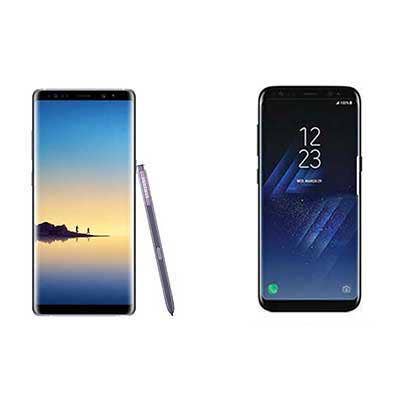
Which Galaxy Should You Get?
Samsung's new smartphone launches this year have aimed for three things: bigger, better displays, enhanced camera features, and more enterprise-friendly functions.
In March, Samsung lifted the curtain on its newest Galaxy models, the Galaxy S8 and bigger Galaxy S8+. On Wednesday, the mobile company launched its Galaxy Note8, which it will begin taking orders for on August 24.
The South Korean electronics giant hopes its newest phones will help win new smartphone market share and beat out competitor Apple. Which Galaxy phone should Samsung enthusiasts buy? Following is a head to head comparison of the Galaxy S8+ and the Galaxy Note8.

Display
Samsung says that its Galaxy Note8 has the biggest display yet on any Note at 6.3 inches. That narrowly inches out the 6.2-inch display of the Galaxy S8+. Samsung said it has amped up the display size of its Galaxy lineup to help enterprise users who want to send emails, take notes and post calendar notifications all from their smartphones.
For the most part, however, the displays for both the Note8 and the Galaxy S8+ are similar – both phones feature a Super AMOLED Infinity Quad HD display with a 2,960 x 1,440-pixel resolution. Both models have also been designed to have nearly non-existent bezels – so the displays cover most of the front of the phones.
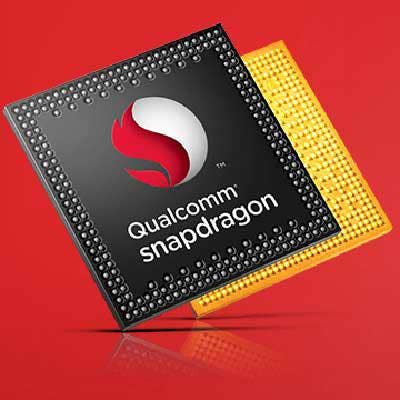
Processor
The Galaxy S8+ includes Qualcomm's new octa-core Snapdragon 835 processor – a 10-nanometer chip that is clocked up to 2.45 GHz. The Galaxy Note8 also features the Snapdragon 835 octa-core 64-bit processor. The company said there are two processor options in the Note8 – one that is clocked at 2.3GHz and can extend by 1.7GHz, and the other that has a clock speed of 2.35GHz and can extend by 1.9GHz.
Because both processors use the 10-nanometer manufacturing process, the Note8 and Galaxy S8+ will both have a slower drain on their batteries and have more space inside the phones.
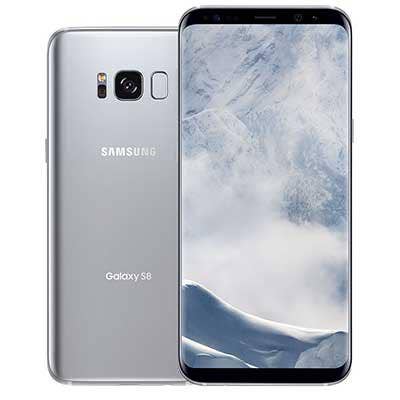
Battery
The Galaxy S8+ will get a 3,500 mAh battery, which is bigger than the 3,300 mAh battery of the Galaxy Note8. Another disadvantage for the Note lineup is that the Galaxy Note7 models, released in August 2016, had to be recalled because they were catching fire due to a manufacturing glitch in the phones' batteries.
However, Samsung has sought to reassure customers it has taken extra steps to check its batteries. Emphasizing that its Note8's battery has undergone an 8-point battery safety check process, as well as additional testing from a third-party expert, Underwriters Laboratories.
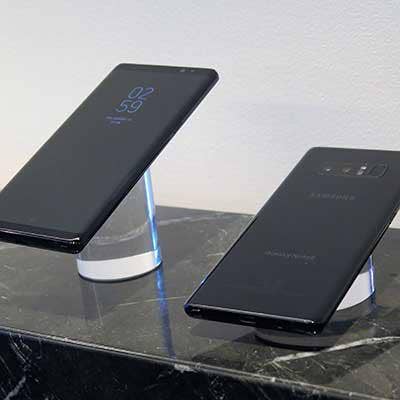
Storage And Memory
The Galaxy S8+ comes with 4GB of RAM and 64GB of storage, which can be expandable to up to 256GB of storage with a microSD card. Meanwhile, the Galaxy Note8 contains 6GB of RAM, as well as 64GB of storage with expandable memory of up to 256GB.
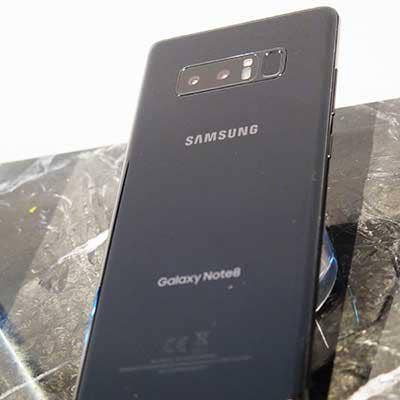
Cameras
The Galaxy Note8 has improved camera features – on the back, the phone features two 12-megapixel cameras with Optical Image Stabilization on both the wide-angle and telephoto lenses – so that users can take pictures that control the depth of the field and take a close-up and wide-angle picture simultaneously.
This beats out the camera on the Galaxy S8+, which includes one 12-megapixel rear camera with dual-pixel technology. On the front of both phones is an 8-megapixel camera with smart autofocus capabilities.
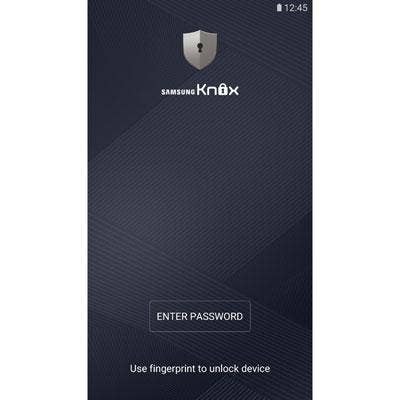
Security
Both Samsung's Galaxy S8+ and its Note8 feature fingerprint and iris scanning biometric features, as well as the company's Knox security platform built into the software and hardware layers.
However, the Note8 will ship with version 2.9 of Knox, which gives administrators improved network analytics and can warn users when background apps access the phone's microphone or cameras. The Galaxy S8+ does not have the updated version of Knox, and instead uses version 2.8.

Additional Features
Unlike the Galaxy S8+, the Note8 has the S-Pen so that users in the workplace can scribble down notes. The new Note's S-Pen includes a finer tip and improved pressure sensitivity, as well as an enhanced translating feature that lets customers quickly translate text.
Both the Note8 and Galaxy S8+ adapt to Samsung DeX, the company's station accessory that helps transform the smartphone into an Android-powered desktop computer; both are compatible with Samsung's new Bixby virtual assistant, and both come with IP68 rating, so the device can survive in water for at least a half hour at depths of up to 5 feet.
Finally, both the Galaxy S8+ and the Note8 have an important multitasking feature that will attract enterprise customers. This split screen mode allows users to open and use two apps on their screen at once.

Price And Availability
The Galaxy S8+ started at $720 and was launched in March across retail stores and through carriers. On the Galaxy Note8 side, Samsung said that pre-orders for the Galaxy Note8 would begin on August 24 and the phone will be released on September 15. The company will offer the phone in black and gray colors through carriers, and it will also sell both colors as Unlocked by Samsung versions. Pricing for the phone will range from $930 from T-Mobile, $950 from AT&T, and $960 from Verizon.